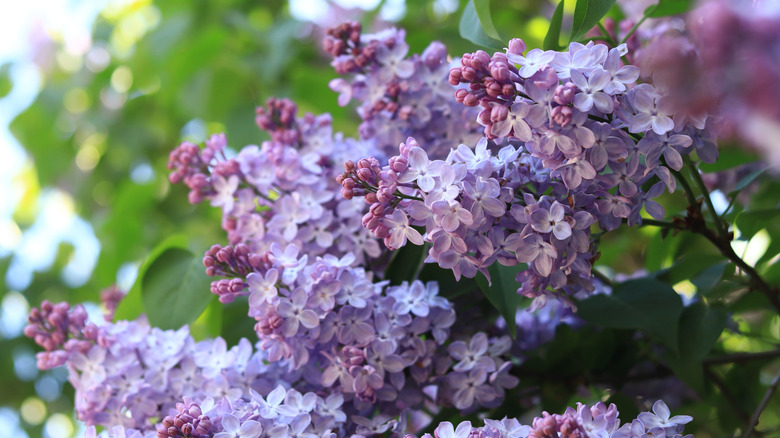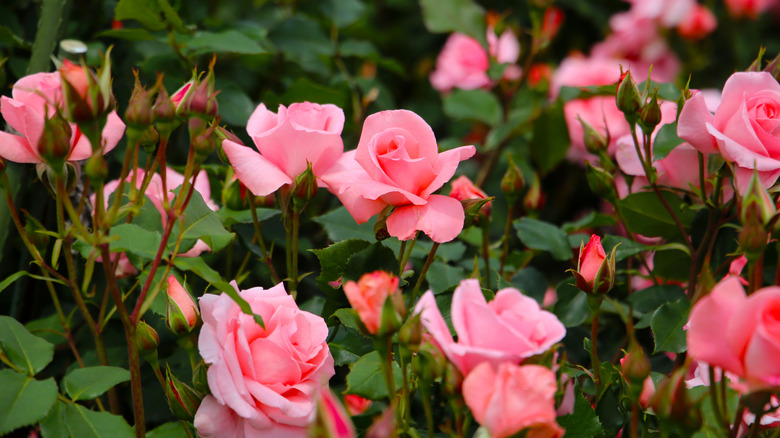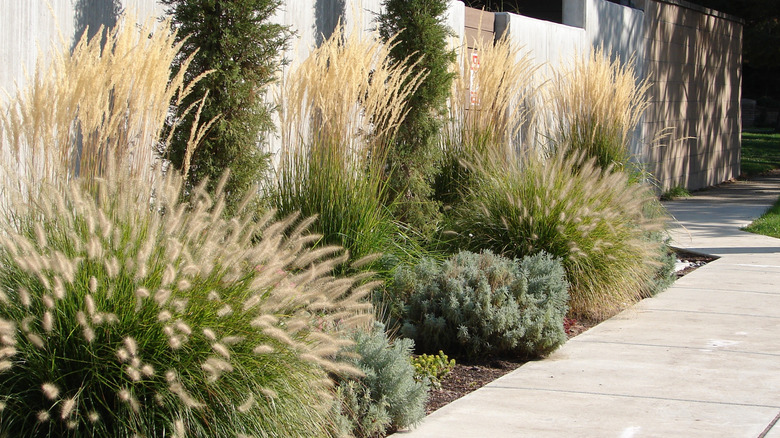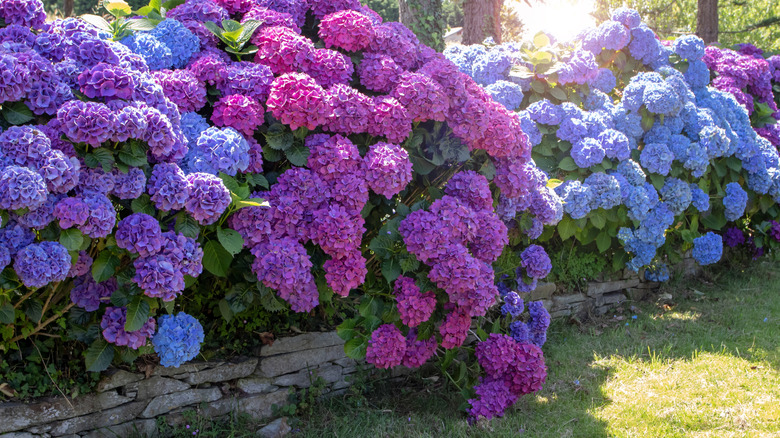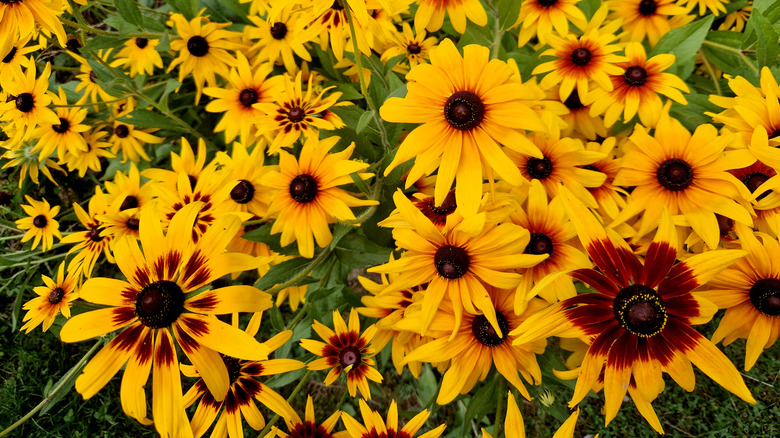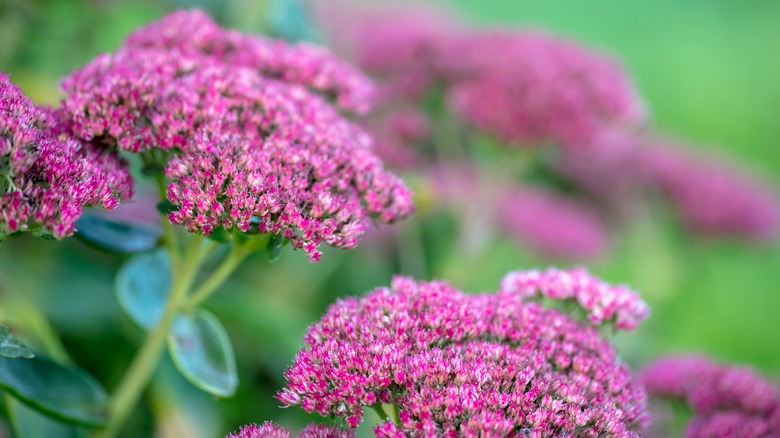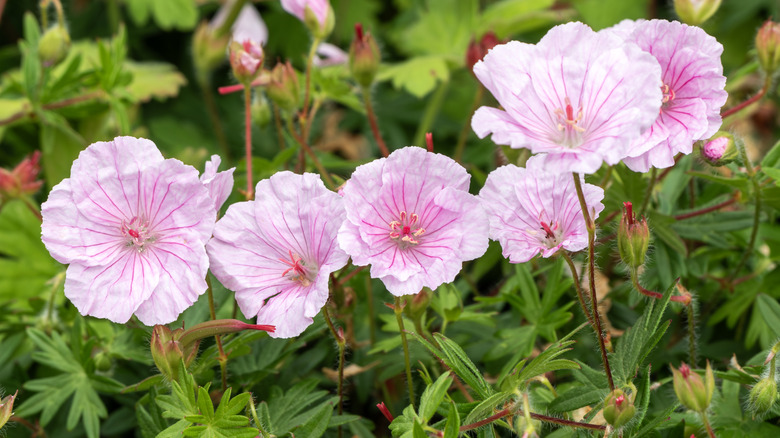10 Plants To Avoid Pruning In October For More Success In Spring
Pruning is a necessary care task that is a regular part of growing and taking care of plants, and doing so the right way and at the right time of year keeps your plants and trees healthy and looking nice and neat. If you're new to gardening, there are several mistakes to avoid while pruning that will keep you from damaging your plants. One of the most common mistakes is pruning a particular plant at the wrong time of year. Every plant is different and has different pruning needs. Some plants, like these 17 perennials, should be pruned in summer to encourage more blooms next season. Still others, like roses, lilacs, and hydrangeas, should not be pruned in October so you have more success with them in the spring.
You could choose to plant these 24 beautiful garden plants that you don't need to worry about pruning at all, but most gardens have several plants that require some degree of pruning. Your job is to perform this task at the right time. For some plants, like hydrangeas and forsythia, cutting them back in the fall cuts off the blooms for the following year, as they bloom on old wood. Trimming branches also signals plants to send out new growth. When you prune some plants in the fall, it encourages new growth during a time when the cold weather of winter can damage or kill them. Another important reason to avoid fall pruning of plants like coneflowers, stonecrop, or black-eyed Susans is because they develop seed heads after blooming. These seed heads are a much-needed food source for songbirds and other wildlife when food becomes scarce.
Lilacs
Lilacs (Syringa vulgaris) are not only gorgeous, but they smell heavenly, too. Lilacs are perennials in USDA Hardiness Zones 2 to 7. Since lilacs bloom on old wood, they should only be pruned within 4 to 6 weeks after the flowers have finished blooming in early summer. Otherwise, you will remove the next year's blooms. At that time, you can thin the bushes out, remove any dead or diseased branches, shape the bushes, or just do some light trimming to keep things tidy.
Roses
Roses (Rosa) are lovely and fragrant perennials. They're generally hardy in zones 5 to 8, but certain types can thrive in cooler or warmer areas. The best time to prune roses will depend on the type you have, but in general, prune them when they are dormant in late winter or early spring. Pruning roses in fall can encourage new growth, which will more than likely be destroyed by upcoming frost and extreme cold. Old fashioned or heirloom roses are the exception to this rule and should be pruned in late summer right after flowering.
Ornamental grasses
There are plenty of kinds os ornamental grasses out there, but as a general rule, they shouldn't be trimmed back in October. Pruning grasses in the fall removes potential shelter and food for birds and other wildlife. If you wait to prune them until February or March, birds and other wildlife can use the grasses for shelter and get food from the dried seed heads. The only exception to this is if you live in an area where there can be wildfires. In that case, it is recommended to cut the grasses as soon as they go dormant.
Hydrangeas
Hydrangea bushes are a very popular perennial, offering a variety of gorgeous blooms in colors including pink, green, white, blue, and purple. Most are hardy in zones 3 to 9. Pruning hydrangeas in fall can encourage growth at the wrong time, causing new shoots to be killed by frost. It can also remove next year's blooms if they are old wood bloomers. Prune old wood bloomers in late summer once they have finished blooming for the season. New wood bloomers can be cut down to the ground in late winter or very early in spring.
Azaleas
Another colorful perennial bush is the gorgeous azalea (Rhododendron), hardy in zones 6 to 9. Just like with hydrangeas and lilacs, pruning azaleas in fall encourages new growth that can be destroyed by frost and cold temperatures. The best time for pruning is in late spring right after the flowers drop off. Deadheading the spent flowers will keep the shrub looking nice, but isn't considered necessary and won't have much affect on future blooms. Most gardeners deadhead azaleas strictly for cosmetic reasons after flowering.
Coneflowers
Coneflowers (Echinacea) are a favorite perennial of pollinators and wildlife that love their colorful petals in the summer and seed heads in the fall. They are hardy in zones 3 to 9. Most gardeners that grow coneflowers don't deadhead them so that birds, especially goldfinches, can enjoy the seeds in the fall when food is starting to become scarce. Pruning in fall removes this valuable food source. The best time to prune coneflowers and tidy them up is in very late winter or early spring before they come out of their dormant state.
Black-eyed Susans
Bright and cheerful black-eyes Susans (Rudbeckia hirta) are perennials, hardy in zones 3 to 9. These flowers will start to die back in September depending on your region. While some gardeners cut them back during this time and mulch around the crown to protect them for the winter, if you leave the last set of blooms and let them seed, birds will be able to eat the seeds throughout the late fall and winter. Cut black-eyed Susans back in late spring by about 1/3 to encourage more blooms in the late summer and keep the plants bushier.
Stonecrop
Stonecrop (Sedum) is a low-maintenance perennial succulent that's hardy in zones 3 to 11. Upright varieties of stonecrop can be deadheaded in springtime to encourage them to grow in a more compact shape. Leaving the faded flowers on the stems in fall brings some color to your garden in the winter and provides a food source for songbirds. Prune the upright varieties in early spring before the new growth appears. Ground cover stonecrop usually does not need pruning, but you can cut it in early spring if it is growing outside of the desired area.
Forsythia
Forsythia is another bright yellow flowering plant that will add plenty of sunshiny color to your garden. It's hardy in zones 5 to 8. Proper pruning of your forsythia will ensure its health and help create a tidier appearance. Forsythia blooms on old wood, so if you prune in October, you will cut all of next years blooms off. Instead, prune immediately after the plants' flowers have faded, usually somewhere in late spring or early summer depending on your growing zone.
Cranesbill
Cranesbill (Geranium) is a colorful perennial that is hardy in zones 3 to 9. The best time to prune cranesbill is in early spring, right before any new growth starts to appear. At this time, remove any dead flowers, leaves, or stems. You can also shear the plants in mid-summer after they are done flowering, a process that will encourage new growth and a second round of flowers.

